A do-it-yourself guide from Edinburgh Woodturning - suppliers of high quality legs and bun feet for Sofas, chairs, beds, footstools and most furniture. www.edinburghwoodturning.com
E-Nuts
This type of fixing is used mainly:
a) when you cannot get access to the top rail of the frame to locate a T-Nut.
or
b) when the wooden rail is more than about 40 mm thick.
Most Divan type beds will require this fixing unless they have retained nuts already factory fitted (often a metal plate is used with 8 mm or 10 mm nuts affixed.)
IMPORTANT - you should not use this fixing for legs if the wooden rail is less than 28 mm thick because the fixing will not be reliable.
E-Nut
The E-Nut is a threaded insert which must be screwed as deep as possible into a pre-drilled hole. The leg simply screws into the insert. The E-Nut is driven into the pilot hole using an 8 mm hex key as shown in the photo below:
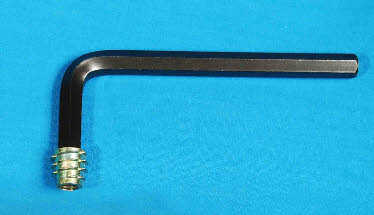
This method can be used for fitting legs to thick wooden blocks, Divan Beds, Kitchen furniture or indeed any item where the wooden structure is solid and thicker than 28 mm.
Do not use E-Nuts to attach legs to boards which are less than 28 mm thick. It will result in failure unless you intend only to fit Bun Feet to your furniture. (Bun Feet are wider than they are high, so they do not exert a significant lever force on the fitting.)
1) First Step - Drill the hole
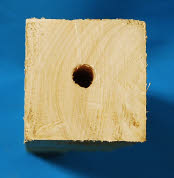 Locate the position of the legs and drill a hole 45 mm deep.
Locate the position of the legs and drill a hole 45 mm deep.
(only drill 1 hole initially until you are sure it will work.)
If the timber is hardwood use a 12 diameter drill.
If the timber is softwood or Pine, use an 11 mm dia. drill.
It is better to use cheap standard metalworking drill bits for this task since woodworking Lip-and-Spur bits are likely to produce an oversized hole with a hand-held power drill.
2) Second Step - Fit the Insert
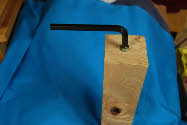 Using an 8 mm hex key, screw in the E-Nut so that it is deep in the timber. If the
dowel screw is 35 mm long, put the E-Nut 28 mm deep into the hole. (28 mm from the
entrance.)
Using an 8 mm hex key, screw in the E-Nut so that it is deep in the timber. If the
dowel screw is 35 mm long, put the E-Nut 28 mm deep into the hole. (28 mm from the
entrance.)
This fixing depends on the insert being deep in the timber for its strength, which is why you should not use it on thin boards (18-29 mm.)
Make sure your fitting is like the top cutaway photo below :
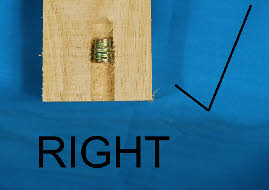 The insert should be 28 mm from the entry point.
The insert should be 28 mm from the entry point.
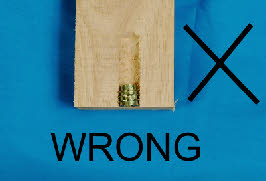
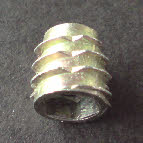
3) Fit the leg
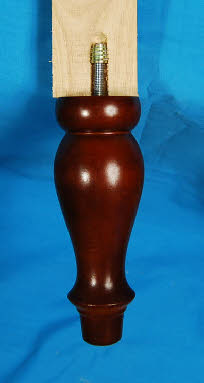 This cutaway photo shows a correctly fitted E-Nut.
This cutaway photo shows a correctly fitted E-Nut.
This fixing is strong.
Be careful not to over-tighten the leg.
4) Replace the fabric/hessian covering and re-staple.
Where applicable, the covering material can be re-stapled with a domestic stapler if required.
The job is complete.